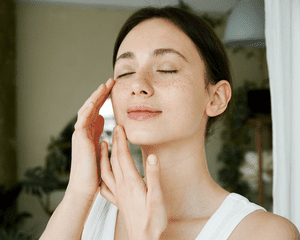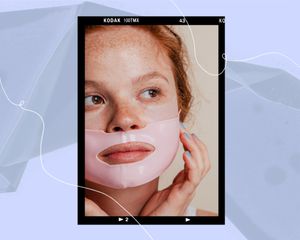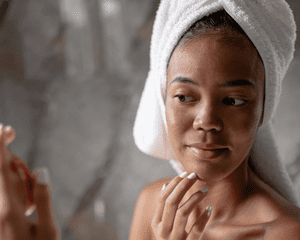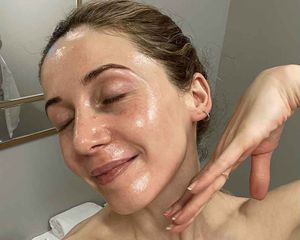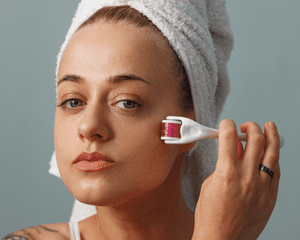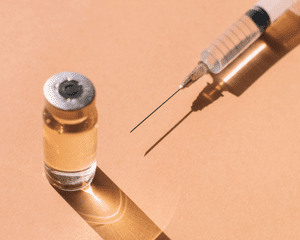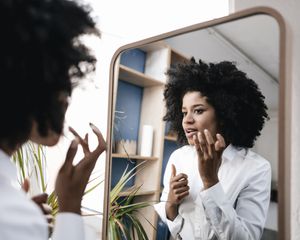:max_bytes(150000):strip_icc()/Stocksy_txpd13f9219Hyj300_Medium_3510940-2b43bdf23afe4c3b94fe212604ed4db6.jpg)
Javier DÃez / Stocksy
In This Article
Close your eyes and imagine a skincare treatment that delivers glowy, baby-soft skin. It sounds like something out of a dream, but as skincare technology advances, a slew of innovations promise to deliver on just that—one being microdermabrasion.
While this in-office treatment does involve some poking and prodding of the skin, it's ultimately beloved by skincare enthusiasts for myriad reasons. It delivers a lit-from-within glow, smooths out uneven texture, reduces the appearance of fine lines, and more. It's an intense physical exfoliation, but for many, it's well worth the money.
If you're curious to learn more about this radiance-boosting treatment, we tapped three board-certified dermatologists—Dendy Engelman, MD, Lily Talakoub, MD, and Arielle Nagler, MD—to get all the tea. Below, they explain in detail what microdermabrasion is, what the treatment involves, its benefits, and potential side effects. Glowy skin, coming right up.
Meet the Expert
- Dendy Engelman, MD, is a board-certified dermatologist at the Shafer Clinic in New York City.
- Lily Talakoub, MD, is a Virginia-based board-certified dermatologist.
- Arielle Nagler, MD, is a board-certified dermatologist at the New York University Langone Medical Center.
What Is Microdermabrasion?
Microdermabrasion is "a minimally invasive procedure that uses a slightly abrasive instrument to gently exfoliate the skin, removing dead skin cells at the surface," Nagler tells us.
"If you take the word apart, micro means small; derm is short for dermis and means skin; and abrasion means the process of scraping away," Engelman explains. "So, if you put it together, it literally means the process in which you use instruments to create microscopic abrasions in the skin to remove the thicker top layer of the skin."
How Does Microdermabrasion Work?
The procedure itself is pretty simple. "First, the skin is cleansed. Then a machine uses a gentle vaccine pressure to spray crystals along the skin, and, through gentle horizontal and vertical swipes of the handpiece, the crystals rub on the epidermal layer of the skin, exfoliating the dead skin cells," explains Talakoub. "The crystals are then gently wiped off the face with a brush or warm towel."
Nagler says most microdermabrasion devices use crystals or diamonds to remove dead skin, while others use a vacuum to suction it out.
Benefits of Microdermabrasion
According to both Nagler and Talakoub, the benefits of microdermabrasion include:
- Smoother skin
- A brighter complexion
- Reduced appearance of fine lines
- A more even skin tone
- Reduced appearance of dark spots
- Cleaned-out pores
Plus, whether you're oily or dry, you're probably a candidate: "Any skin type can benefit from microdermabrasion," says Engelman.
"It has the benefit of limited downtime and risk," says Nagler. She adds: "It's important to know that the results are very subtle and often require multiple or adjunctive treatments."
Potential Side Effects of Microdermabrasion
According to our experts, one of the best aspects of microdermabrasion is the minimal side effects. Engelman and Nagler say most people will experience short-term redness that will improve within a few hours. If your physician happens to go too deep into the skin during treatment, Engelman says you may experience some burning or stinging, but this will also be temporary.
Preparation and Aftercare for Microdermabrasion
Talakoub says to avoid using retinoids, acids, or peels in conjunction with microdermabrasion treatments, as it will cause redness. Engelman agrees; she also advises patients to stop using retinoid treatments two weeks before and after treatment. She also recommends you tell your physician if you have cold sore breakouts or if you tend to scar easily as a precautionary step.
What Does Microdermabrasion Cost?
Microdermabrasion can cost anywhere from $150 to $250 per session, depending on if it is combined with a peel, soaks, or treatment afterward, Talakoub tells us. Engelman charges $200 for microdermabrasion sessions.
